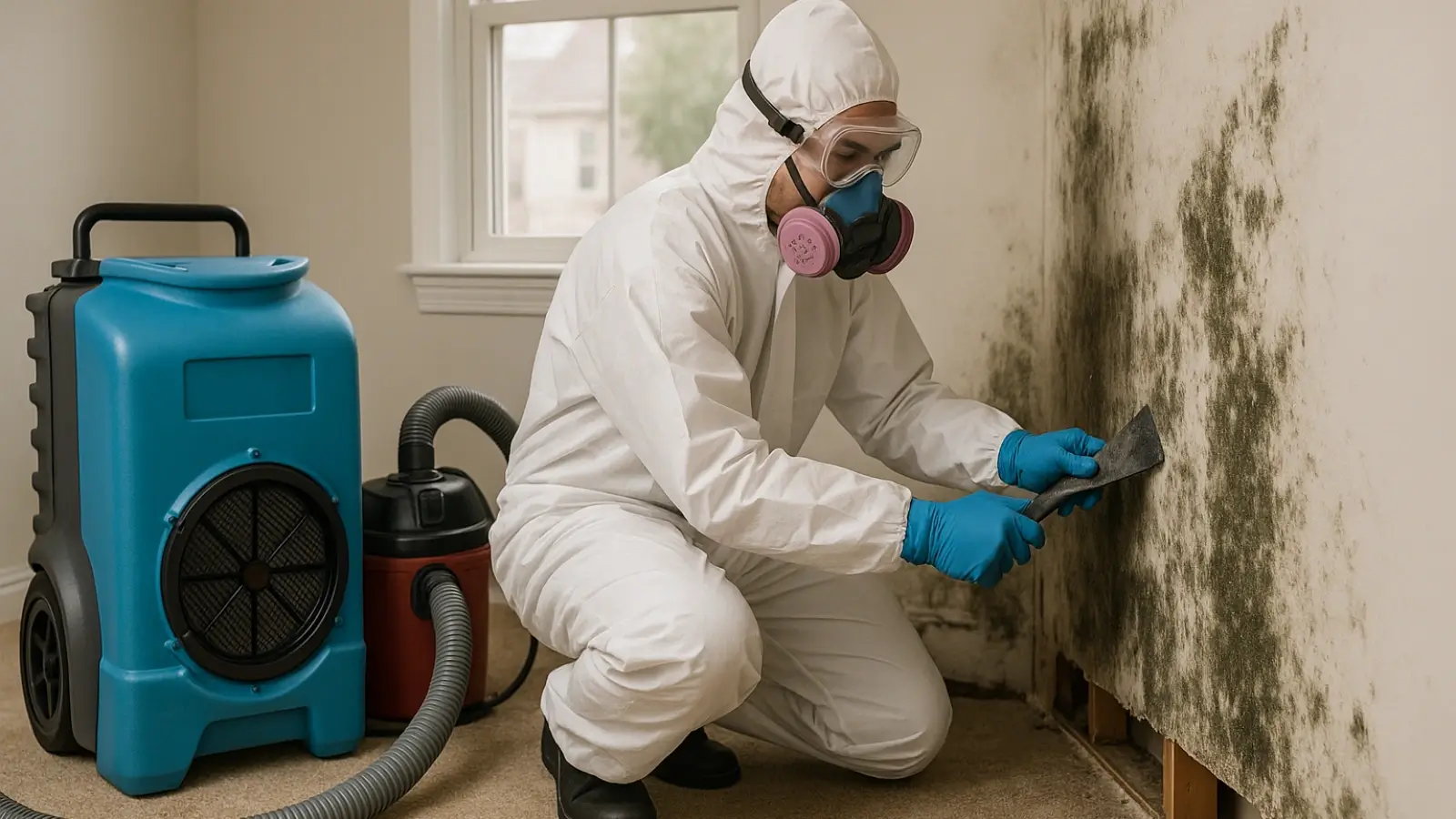


Discovering mold in your home feels a bit like finding out a villain from a horror movie has been quietly squatting in your basement. It's unwelcome, unsettling, and you definitely don't want it sticking around. For homeowners in Cleveland, the city's charming, older housing stock and humid summers can create the perfect conditions for this fungal foe to thrive.
If you've spotted fuzzy patches in your bathroom or caught a musty whiff in your attic, you're not alone. Mold is a common problem, but that doesn't make it any less serious. Ignoring it can lead to property damage and potential health issues for your family.
This guide will walk you through everything you need to know about mold remediation in Cleveland. We'll cover what mold is, why it loves our city so much, how to spot it, and the steps to take to safely and effectively show it the door. Think of it as your battle plan for reclaiming your home from this unwanted guest.
Before you can defeat the enemy, you have to know the enemy. Mold is a type of fungus that exists just about everywhere, both indoors and outdoors. It spreads by releasing tiny spores into the air. When these spores land on a damp surface, they can start to grow and multiply.
While a little mold is a natural part of the environment, a large infestation inside your home is a different story. Common types of indoor mold include:
Not all mold is toxic, but many types can trigger allergies, asthma attacks, and other respiratory problems. The key takeaway is that any significant mold growth in your home should be treated seriously.
Cleveland has a unique climate and architectural landscape that can make homes particularly susceptible to mold. The humid continental climate means we get warm, damp summers and cold, snowy winters. This constant fluctuation in temperature and moisture levels creates ideal breeding grounds.
Here are a few specific reasons why your Cleveland home might be at risk:
These factors combine to create a perfect storm. When mold spores find a damp, dark, and poorly ventilated space—like a basement corner or behind a leaky pipe—they have everything they need to set up camp.
So, you've found mold. What now? Don't just grab a bottle of bleach and start scrubbing. Improperly handling a mold problem can spread spores and make the situation worse. Professional mold remediation is a systematic process designed to contain and eliminate the problem safely.
Here’s what you can expect when you hire experts for mold remediation in Cleveland:
First, a professional will thoroughly inspect your home to identify the extent of the mold growth and the source of the moisture. This might involve using moisture meters and thermal imaging cameras to find hidden water damage. They'll determine the type of mold and create a detailed remediation plan.
This is a critical step. The contaminated area is sealed off from the rest of the house using plastic sheeting and negative air pressure machines. This prevents cross-contamination, ensuring mold spores don't travel to unaffected parts of your home during the cleanup. It's like putting the mold problem in quarantine.
High-efficiency particulate air (HEPA) filters and "air scrubbers" are used to capture microscopic mold spores out of the air. This process runs throughout the remediation to clean the air and prevent spores from settling on new surfaces.
This is the part where the real work begins. Professionals use specialized techniques to remove mold-infested materials. Porous materials like drywall, insulation, and carpet that are heavily contaminated often need to be carefully removed and disposed of. Non-porous surfaces like metal and glass can usually be cleaned and sanitized. They’ll use antimicrobial treatments to kill any remaining mold and prevent it from returning.
After the mold is removed, the entire area, including personal belongings, is thoroughly cleaned and sanitized. This might involve deep cleaning furniture, curtains, and other items that were in the affected space.
The final step is to repair and restore your home. This could mean replacing drywall, painting, or laying new carpet. The goal is to return your home to its pre-mold condition. Crucially, this phase also includes addressing the original moisture source—fixing that leaky pipe or sealing that foundation crack—to ensure the problem doesn't come back.
Dealing with mold can be stressful, but it's a manageable problem when handled correctly. The key is to act quickly and enlist the help of professionals who understand the specific challenges of mold remediation in Cleveland. A qualified team has the right equipment, training, and experience to ensure the job is done safely and completely, giving you peace of mind and a healthy home.
If you suspect you have a mold issue, don't wait for it to get worse. A professional inspection can confirm the problem and outline the best course of action. Reclaiming your home from mold isn't just about cleaning up a mess; it's about protecting your property and your family's health.